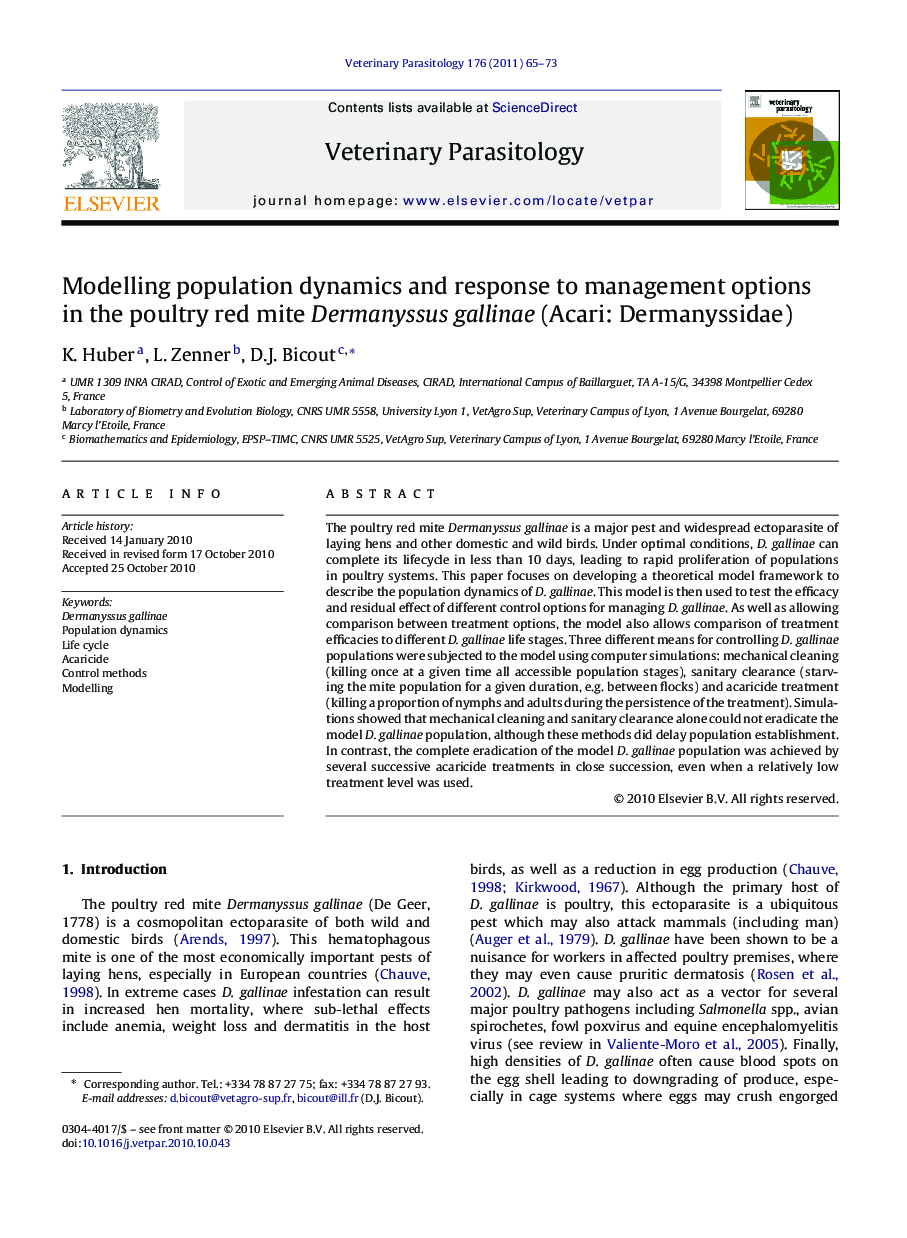| کد مقاله | کد نشریه | سال انتشار | مقاله انگلیسی | نسخه تمام متن |
|---|---|---|---|---|
| 2470492 | 1112499 | 2011 | 9 صفحه PDF | دانلود رایگان |

The poultry red mite Dermanyssus gallinae is a major pest and widespread ectoparasite of laying hens and other domestic and wild birds. Under optimal conditions, D. gallinae can complete its lifecycle in less than 10 days, leading to rapid proliferation of populations in poultry systems. This paper focuses on developing a theoretical model framework to describe the population dynamics of D. gallinae. This model is then used to test the efficacy and residual effect of different control options for managing D. gallinae. As well as allowing comparison between treatment options, the model also allows comparison of treatment efficacies to different D. gallinae life stages. Three different means for controlling D. gallinae populations were subjected to the model using computer simulations: mechanical cleaning (killing once at a given time all accessible population stages), sanitary clearance (starving the mite population for a given duration, e.g. between flocks) and acaricide treatment (killing a proportion of nymphs and adults during the persistence of the treatment). Simulations showed that mechanical cleaning and sanitary clearance alone could not eradicate the model D. gallinae population, although these methods did delay population establishment. In contrast, the complete eradication of the model D. gallinae population was achieved by several successive acaricide treatments in close succession, even when a relatively low treatment level was used.
Journal: Veterinary Parasitology - Volume 176, Issue 1, 28 February 2011, Pages 65–73